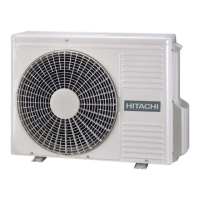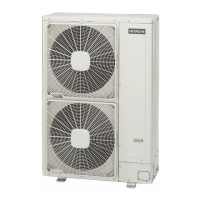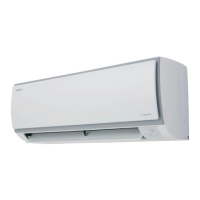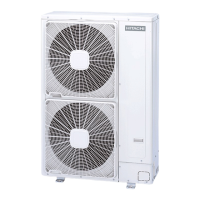7. Terminal box cover
8. Compressor
9. Compressor wires
10. Fix it with screw
11. Compressor wires (3 wires)
A. Details for compressor terminals
N O T E
• Compressor piping must be connected by brazing. MAKE SURE that any flammable material is not around
before heating with burner, for the oil inside the piping may flame up.
• Do not expose the refrigerant cycle to the atmosphere for a long period to avoid moisture or dust into the
cycle. Be sure to replace the compressor immediately after removing. Seal the suction and discharge pipes
when the refrigerant cycle is left unattached for a long period.
• Remove the cap of new compressor right before the replacement. Before mounting the compressor, seal
the suction and discharge pipes with a tape to protect the compressor from dust. Remove the tape when
blazing the pipe.
• For piping at reassembling, ensure that the compressor terminal numbers and wiring mark band codes are
matched. Incorrect wiring numbers may result in inverse rotation and damage of the compressor.
8 Remove the suction pipe and discharge pipe from the compressor.
• Isolate the wires and electrical components to protect from the burner flame at brazing.
9 Remove two (2) nuts fixing the compressor and remove the compressor from the unit by lifting in the condition of slightly
inclining forward.
10 When brazing the replaced compressor, quickly perform the brazing while the compressor side piping is cooled with
wet cloth in order to avoid the brazing material from entering the compressor. If the brazing material enters the
compressor, it will lead to compressor failure.
11 Reassemble the parts in the reverse order of removing procedures.
• Tighten the screws (U, V and W) for compressor wires with 2.5 Nm.
• Fix the lead wire firmly.

